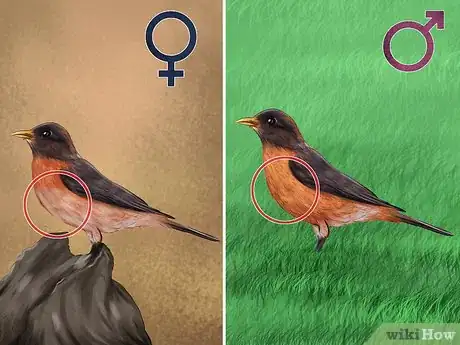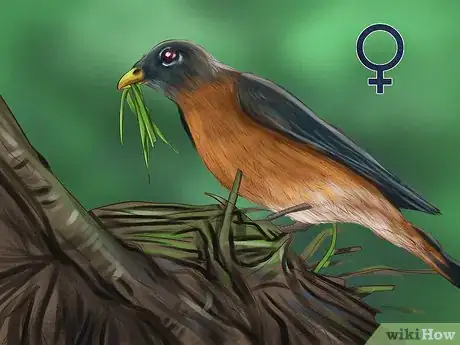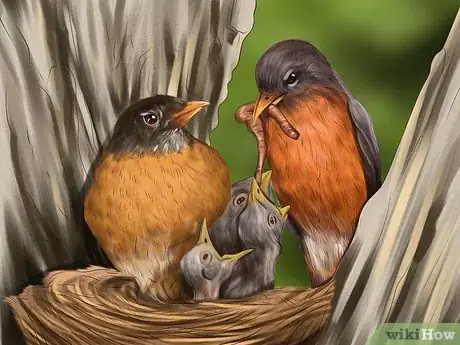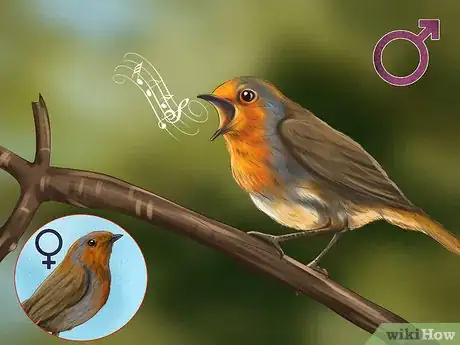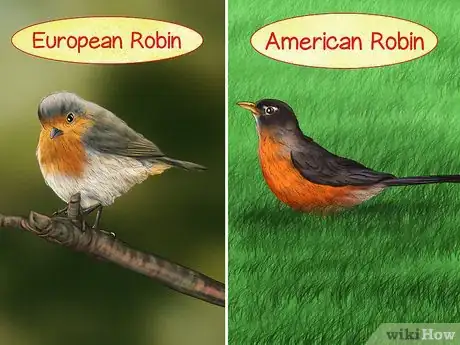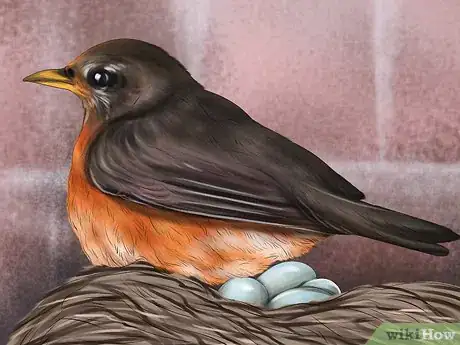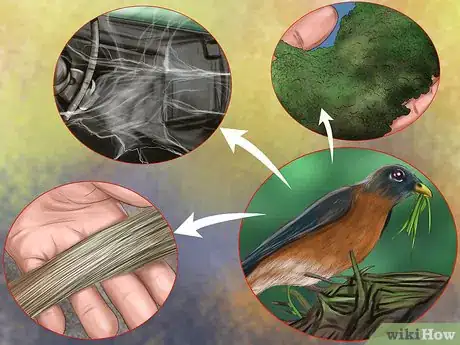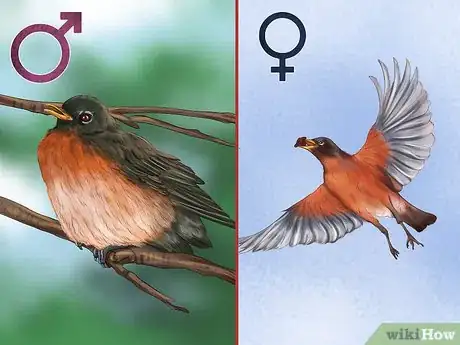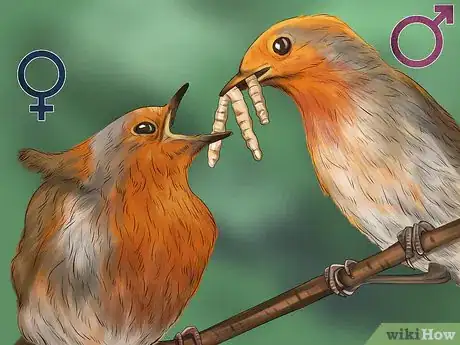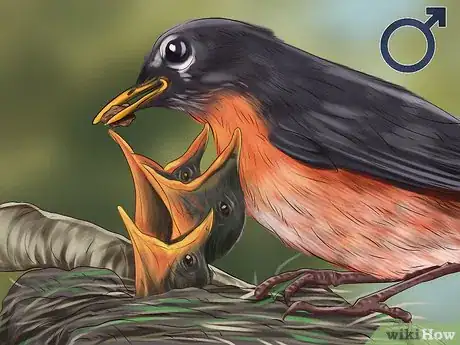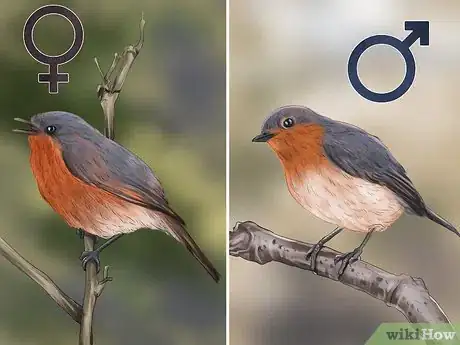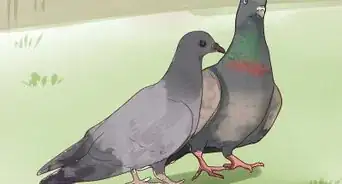This article was co-authored by Roger J. Lederer, PhD. Dr. Roger Lederer is an Ornithologist and the founder of Ornithology.com, an informative website about wild birds. Dr. Lederer has spent over 40 years teaching, studying, and writing about birds. He has traveled to over 100 countries to study birds. Dr. Lederer is an Emeritus Professor of Biological Sciences at California State University, Chico, and has been a Department Chair of Biological Sciences and Dean of the College of Natural Sciences. He has written more than 30 research papers and 10 books on birds and a textbook entitled “Ecology and Field Biology.” Dr. Lederer has consulted the BBC, National Geographic, National Public Radio, ABC News, the Guinness Book of World Records, and numerous other organizations and publications.
There are 11 references cited in this article, which can be found at the bottom of the page.
wikiHow marks an article as reader-approved once it receives enough positive feedback. This article received 11 testimonials and 91% of readers who voted found it helpful, earning it our reader-approved status.
This article has been viewed 317,365 times.
The robin is a beautiful migratory songbird that many believe brings tidings of the spring season. Robins are quite common throughout Europe and North America and can thrive in many different types of environments. Though at first glance, male and female robins may seem near-identical, they have slight differences in coloration and behavior that distinguish them from each other. We’ll teach you what to look for so you’ll be able to quickly identify a wild robin’s sex whenever you encounter one.
Steps
Distinguishing Between Male and Female American Robins
-
1Study the robin’s plumage. The breast on male robins is a rusty red, deeper than that of their female counterparts. The female breast will be lighter in color, trending towards reddish-orange.[1]
- Wing and tail feathers will also be different. Male robins tend to have darker black wings and tail feathers while females typically have a charcoal tone to their plumage.
- There is less contrast between the head and back feathers in females (where they are typically a blackish gray color) than among males.[2]
-
2Discover which bird is building the nest. Nests are built primarily by females. Male robins assist the building effort only occasionally.[3] If you can catch a robin in the act of building its nest, chances are you've identified a female.Advertisement
-
3Observe nesting behavior. Male robins will care for the young at night during their first year. Female robins use this time to incubate the second brood but return during the day to feed and care for the hatchlings.[4]
-
4Pay attention to mating behavior. Males pursue females and may engage in fights with other males to ward them off their nesting grounds. Males often sing to attract females, though both males and females are capable of vocalizing.
Distinguishing Between Male and Female Australian (Scarlet) Robins
-
1Look for differences in color.[5] Male and female scarlet robins differ in their plumage significantly more than their European or American counterparts. Males are black with prominent bright red breasts and a white patch above the bill (frontal patch). Females, on the other hand, are brown with a rusty reddish-orange breast and white underparts.
-
2Pay attention to nest behavior. Females sit on the eggs to incubate them. Males, on the other hand, provide their mates with food.[6] This arrangement ensures the eggs stay warm and safe until they are ready to hatch.
-
3Observe how nesting grounds are established. Female scarlet robins build the actual nests with moss, spider webbing, and animal fibers. Males declare a nesting ground off-limits to other birds by vocalizing from a nearby lookout branch. [7]
Distinguishing Between Male and Female European Robins
-
1Follow migration patterns. Female robins will move to an adjacent nesting territory during the summer. Male robins, by contrast, remain on the same territory year-round.[8]
-
2Pay attention to mating behavior. Male robins bring females food -- seeds, worms, or berries -- in order to strengthen the mating bond. The female will warble noisily and flap her wings to communicate that she desires the male's gift.
-
3Observe nesting behavior. After the female has laid eggs, she will remain in the nest for up to two weeks. During this time, the male will bring food to her and her young.
- If you see two robins in a nest with hatchlings and one flies away to obtain food, the one left in the nest is likely the female.[9]
-
4Examine the robin's breast. It is very difficult to distinguish between male and female robins using plumage.[10] However, there are some subtle differences in the breasts of older robins.
- In male robins in their second year of life, the gray fringe around the red breast, continues to widen. The breast itself tends to be larger than that of females.[11]
- While the fringe around the breast of the female robins does not widen significantly as they age, the female's red breast itself does continue to grow with age.
- Knowing the robin's age is important when utilizing breast characteristics to determine the sex of European robins.
Expert Q&A
-
QuestionDo male and female robins have the same coloring?
 Roger J. Lederer, PhDDr. Roger Lederer is an Ornithologist and the founder of Ornithology.com, an informative website about wild birds. Dr. Lederer has spent over 40 years teaching, studying, and writing about birds. He has traveled to over 100 countries to study birds. Dr. Lederer is an Emeritus Professor of Biological Sciences at California State University, Chico, and has been a Department Chair of Biological Sciences and Dean of the College of Natural Sciences. He has written more than 30 research papers and 10 books on birds and a textbook entitled “Ecology and Field Biology.” Dr. Lederer has consulted the BBC, National Geographic, National Public Radio, ABC News, the Guinness Book of World Records, and numerous other organizations and publications.
Roger J. Lederer, PhDDr. Roger Lederer is an Ornithologist and the founder of Ornithology.com, an informative website about wild birds. Dr. Lederer has spent over 40 years teaching, studying, and writing about birds. He has traveled to over 100 countries to study birds. Dr. Lederer is an Emeritus Professor of Biological Sciences at California State University, Chico, and has been a Department Chair of Biological Sciences and Dean of the College of Natural Sciences. He has written more than 30 research papers and 10 books on birds and a textbook entitled “Ecology and Field Biology.” Dr. Lederer has consulted the BBC, National Geographic, National Public Radio, ABC News, the Guinness Book of World Records, and numerous other organizations and publications.
Ornithologist Male and female robins have very similar coloring, but females may have a duller coloration.
Male and female robins have very similar coloring, but females may have a duller coloration.
Warnings
- Don't mess with robins' nests or eggs. They are very territorial birds.⧼thumbs_response⧽
- Variation occurs within robin families and subspecies. For instance, while most of the steps pertaining to the scarlet robin listed above apply generally to all so-called "red robins" in Australasia, 45 unique robin species exist across the continent. Be sure to identify which species you’re studying before trying to determine the sex of an individual bird.⧼thumbs_response⧽
Things You'll Need
- Binoculars
References
- ↑ Roger J. Lederer, PhD. Ornithologist. Expert Interview. 29 April 2021.
- ↑ https://www.allaboutbirds.org/guide/American_Robin/id
- ↑ https://www.audubon.org/field-guide/bird/american-robin
- ↑ http://donjordanoutdoors.com/pages/robins.htm
- ↑ https://books.google.com/books?id=0TIiIdLp9xkC&lpg=PA275&dq=australasian%20robins&pg=PA275#v=onepage&q=australasian%20robins&f=false
- ↑ http://birdlife.org.au/bird-profile/scarlet-robin
- ↑ http://www.birdsinbackyards.net/species/Petroica-boodang
- ↑ https://www.beautyofbirds.com/europeanrobins.html
- ↑ http://www.onekind.org/education/animals_a_z/robin_european
About This Article
To tell a male American robin from a female, look at the color of the feathers on the bird's chest. If they're a deep, rusty red color, it's likely a male robin, and if they're a light, reddish-orange color, it's probably a female. You can also look at the color of the bird's tail feathers, which tend to be darker and more black on male robins. If you notice the bird building a nest, it's most likely a female robin since males don't usually help with the nest. For more tips from our Veterinary co-author, like how to spot male and female Australian robins, read on!
